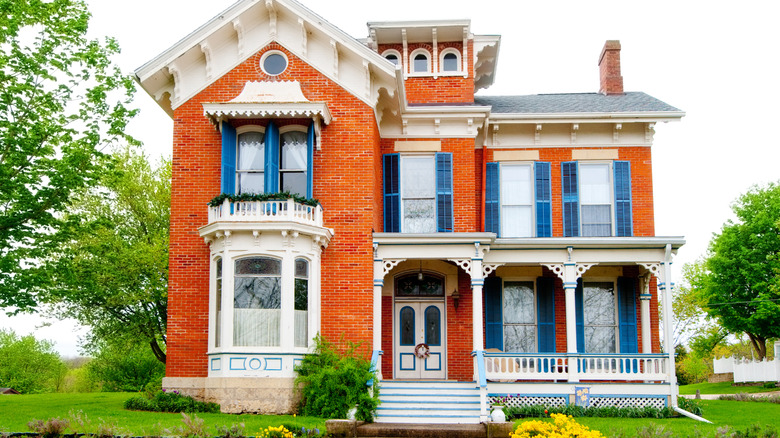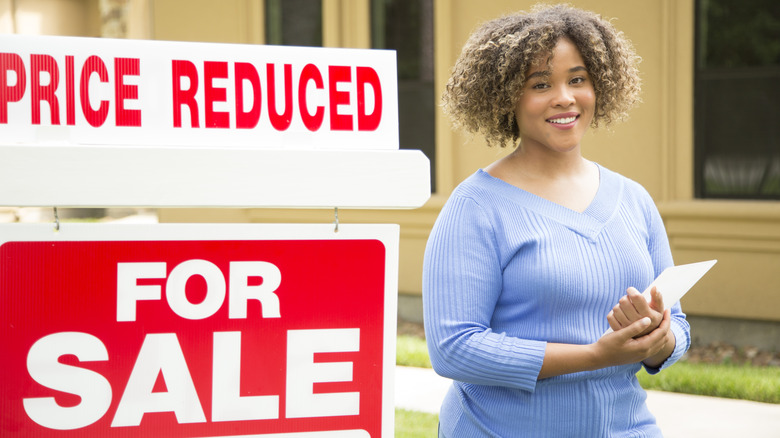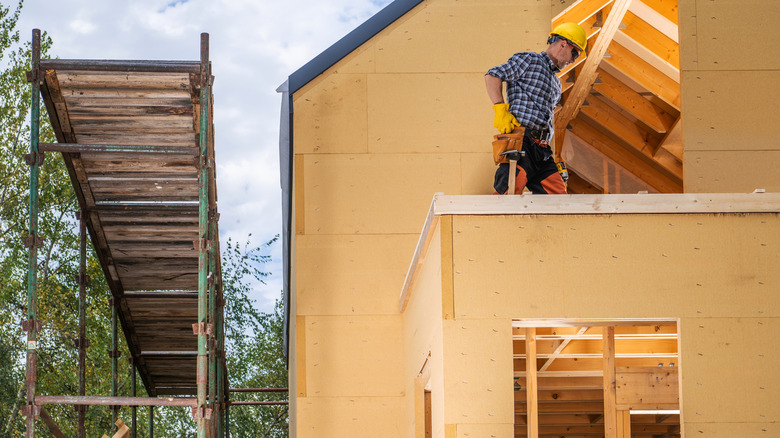Why Vintage, Old Homes Are Now More Expensive Than New Ones
Despite the undeniable charm of older homes, they haven't traditionally received the same love as new construction homes. Buyers have long gravitated toward new builds with their updated appliances, modern finishes, and lack of damage and defects that often plague older homes — and they've been willing to pay a premium for them. Historically, new construction homes have been the more expensive option, but now the tide is turning. As builders increasingly offer discounts and incentives to move inventory, free up capital, and shift focus to lower-cost builds, the pricing landscape is changing, with old and vintage homes increasingly fetching higher prices than newly constructed homes.
"New homes being less expensive than resale homes is an odd situation to be in," Joel Berner, a senior economist with Realtor.com, told the site. "The affordability difference goes beyond sticker price, too, as many builders are offering incentives like cash at closing or reduced mortgage rates that make a major difference in upfront costs and monthly payments."
In June, the median price for existing homes sold in the U.S. was $441,500, topping the price for new homes, which had a median sale price of $401,800 — a record-breaking discount of more than 9%, according to Forbes. To illustrate how unusual this emerging trend is, Forbes reports that the phenomenon of new homes selling for less than existing homes has happened only twice in the 42 years between June 1982 and May 2024. In the short span between May 2024 and June 2025, however, it has happened seven times.
Price cuts and other financial incentives are pushing down prices of new builds
Builders have been highly motivated to attract buyers with cost cuts and other financial incentives, which have largely contributed to the lagging prices of new homes. The National Association of Home Builders (NAHB) reports that in June, 37% of home builders cut prices — the highest percentage in the three years since the organization began tracking it. Meanwhile, 62% of builders were offering incentives.
Existing homeowners, on the other hand, have not been as driven to make the same level of concessions, mainly because many are reluctant to sell their homes and lose the rock-bottom fixed-rate mortgage they were able to lock in during the pandemic. A report by Realtor.com found that as of the second quarter of 2025, more than half of American homeowners were sitting on mortgage rates under 4%, which is well below current rates, which have remained solidly above 6%.
The lock-in effect of rates has led to a significantly lower inventory of existing homes, which has supported their elevated prices. In fact, the Federal Housing Finance Agency believes the lock-in effect has been so impactful that it has prevented more than 1.72 million transactions between the second quarter of 2022 and the second quarter of 2024 and caused home prices to rise 7%. The same has not been true for new builds, which have been dealing with a glut of inventory. In August 2025, the supply of new construction homes hit its highest level since 2009.
Builders are shifting focus to lower-cost, smaller homes
There are other factors at work that have helped push down the prices of new builds. In response to the lack of affordable housing options, many builders have shifted their focus to lower-cost, smaller homes, such as townhouses. NAHB reported that in 2024, the median home size fell to its lowest in 15 years, shrinking to 2,150 square feet from 2,300 square feet, where it remained from 2019 to 2022. In addition, the popularity of townhouses has been on the rise, currently accounting for 17% of single-family homes, up from 10% in 2009. "There's a simple reason this is happening," says Rose Quint, NAHB assistant vice president of survey research. "Townhomes are more affordable as material, lot, and labor prices continue to increase."
There has also been an increase in homes being constructed in more affordable areas, such as the South, Southwest, and Mountain West states, which could also be contributing to lower prices of new builds. Joel Berner told Realtor.com it's more likely to find new builds in more affordable markets. The South, he says, makes up 60% of new home sales compared to 46% for existing homes. While lovers of older homes may be disappointed by this latest pricing trend, if you're looking to grab a good deal in the current market, new construction homes might be your best bet.


